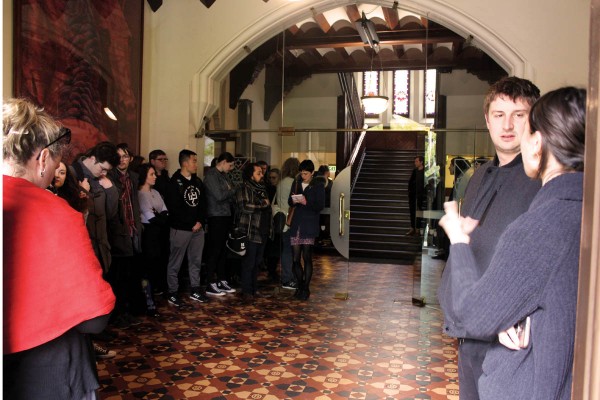University Vice-Chancellor Harlene Hayne cast the deciding vote against OUSA’s proposal to save the Art History and Visual Culture programme, at the University Senate last week.
OUSA Education Officer James Heath motioned “that Senate halts the proposal to disestablish the Art History and Visual Culture programme and explores offering the programme as a stand alone minor,” which split the room with 31 votes for and 31 against. As chair, Harlene’s vote against OUSA was the decider. Subsequently, Pro-Vice Chancellor Tony Ballantyne’s resolution to disestablish Art History and Visual Culture in December 2020 passed.
The decision will be finalised at the University Council. James said OUSA President Caitlin Barlow-Groome “will continue fighting to keep the programme” at Council. He said the significant support for OUSA’s motion “sets a powerful precedent for OUSA effecting change around the University going forward". He called it “a massive win as far as student resistance goes”.
Around fifty students and concerned Dunedin residents resisted in a silent protest at the entrance of the Clock Tower as Senate academics walked in. One protester told Critic they were “acting as a silent reminder of the student livelihoods Senate members were about to decide on”.
“Some of the Senate members smiled at us thinking we were friendly. We weren’t smiling.”
OUSA’s Senate motion to save Art History represented views shared at a public meeting on Tuesday that “showed us an overwhelming level of support for the Art History and Visual Culture programme from our community," said James Heath.
The meeting was attended by representatives of the Hocken, Dunedin Public Art Gallery, Blue Oyster Gallery and the Otago Art Society. City councillor Aaron Hawkins and Sonja from the TEU both spoke as individuals. John Bellamy from Bellamy Gallery gifted OUSA a piece of art he said “represents the current struggle,” entitled ‘Love or Money,’ which James took into Senate.
Pro-Vice Chancellor Tony Ballantyne said, “the proposed changes respond to a sustained shift in the pattern of student interest. With only 18.7 Equivalent Full-Time Students (EFTS) enrolled this year … Art History and Visual Culture is simply not sustainable”.
However, Art History student Renn said she finds it insulting that students are getting the blame for not enrolling, when “it has been neglect by the Uni that has done it”.
She said she has been raising concerns about the struggling programme to the Division of Humanities since 2015. When a founding staff member left in 2014 she asked who would be replacing him and was told, “it doesn’t matter”. Despite having a scholarship for Art History she hasn’t been able to take any Art History papers since 2016 because she’s completed all the papers on offer.
Affected students were only told of the proposal to cut the department in August, despite it being the “culmination of two-and-a-half years of investigation and data analysis,” according to Tony Ballantyne.
Ballantyne said efforts have been made to reshape Art History and Visual Culture at Otago, including ”the development of new promotional material in 2016”. He said combining Art History and Visual Culture into a single major from 2017 was “an attempt to invigorate” the small programmes. But, he said he was not surprised this didn’t draw enough new students as “there has been a marked drop in the number of high schools teaching Art History and in the cohort of students selecting it as a year thirteen option. This is a national issue with strong international parallels”.
Tony also said the “change proposal emerged out of a long sequence of meetings with staff in the programme, the TEU, and also consultation with OUSA stretching back to mid-2016.” Chur past Execs, would’ve been nice to get a heads up earlier.
Nearly 3000 people signed a change.org and written petition to “Save Art History” and supporters of the arts around the country have expressed their disappointment in the University. Critic has seen correspondence between student volunteers and a director of a leading national art gallery who condemned the University’s decision and praised Otago Art History for its sustained contributions to creative industries in New Zealand.



